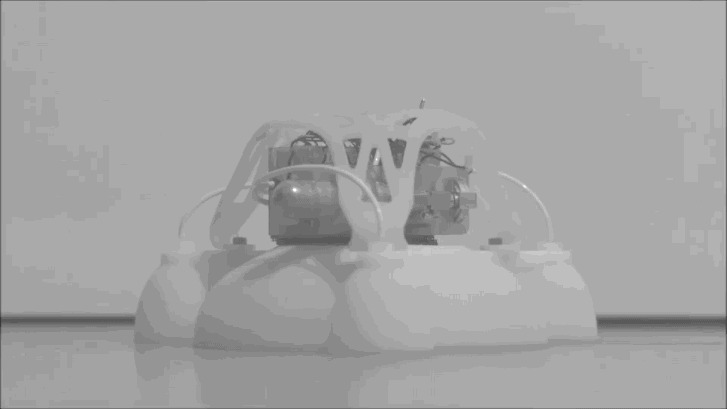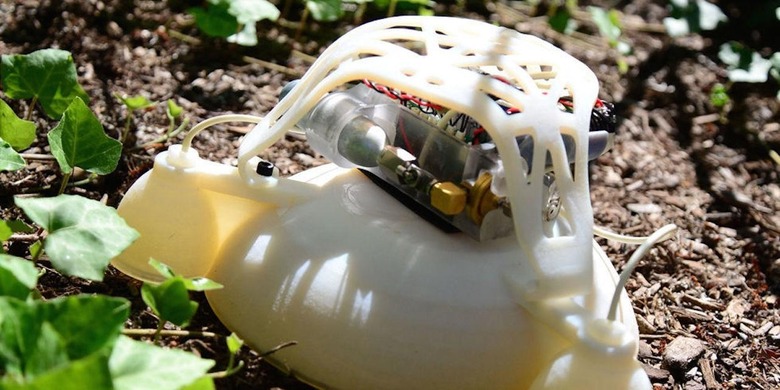3D printed robot built like a squid, hops like a rocket
A squishy, explosively-bouncing robot might herald the next age of 'bot design and could almost be a robo-squid, if only it had a beak. 3D printed robots aren't new, but this is the first time graduated layers of hardness have been used, allowing the explosion-powered blob created by engineers led by Nicholas Bartlett at Harvard University to not only adjust the direction it bounces off in, but to deform in a controlled way on landing that balances preserving the electronics while landing elegantly.
Overall, the robot resembles something akin to a blend of a lampshade and a jellyfish, though using a similar sort of rocket propulsion system as a squid or octopus would to get around the sea. At the bottom there's a jet system relying on bursts of butane and oxygen to launch the robot into the air.
While being able to jump six times your height is impressive, being able to do that and control where you shoot off to is even more useful. So, Bartlett and his team developed a trio of deformable 3D printed legs which, after being individually inflated to differing degrees, can adjust the angle of takeoff.

The impact of landing, meanwhile, is absorbed by the rubbery shell, though that required some finesse. A completely soft robot body would just pass all the forces involved straight into the electronics, which are housed at the top of the robot under a hard, 3D printed roll-cage.
Instead, Bartlett's team used a 3D printer that could blend hard and soft materials "that were mixed at different ratios to form a 9-layer spectrum from completely rigid to completely soft," he explained to Popular Mechanics.

As a result, the deformation is predictable and controllable, allowing the odd-looking little robot to bounce on landing but without passing damaging forces on to potentially delicate – or even dangerous – parts like the butane cylinder.
Examples of the benefits of mixing hard and soft materials together aren't hard to find in nature, Bartlett points out. The way an octopus' deformable body transitions into its hard beak is a good illustration, the researcher says.
SOURCE Science
